Province asks auditor general to investigate saga involving beleaguered eastern Quebec ferry
Whistleblowers allege NM Flix-Adrien Gauthier subject to construction defects and lax quality control
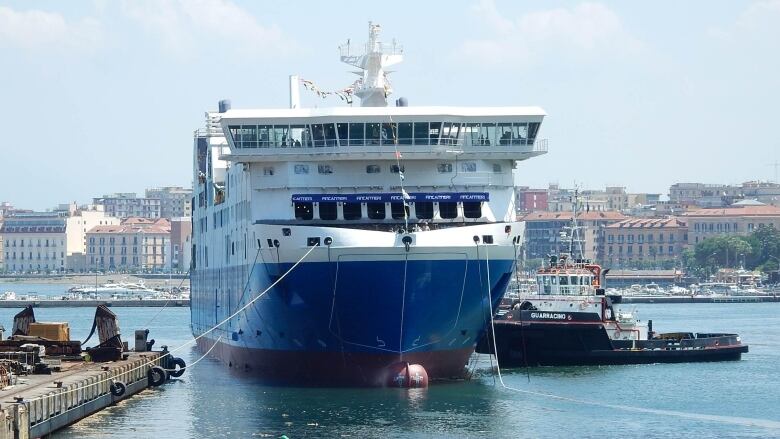
Quebec's auditor general will investigate what happened during the construction of the NM Flix-Adrien Gauthier, a ferry crucial to travel and businesses in eastern Quebec that has been docked for almost a year due to mechanical issues.
Premier Franois Legault made the announcement days after Radio-Canada's Enqute revealed allegations by whistleblowers who say the ferry was subject to construction defects and lax quality control when it was being built.
"Quebecers are not only losing money, but have also gotten very poor service these past few months," Legault said.
The Socit des traversiers du Qubec (STQ), the provincial Crown corporation that runs the ferries, says it welcomes the investigation and will co-operate with the auditor general's office.
Ren Lebrun and Martin Saint-Pierre, former STQ employees, say their attempts to raise concerns during the building process were ignored and they were subject to reprisals by higher-ups.
Lebrun says he was ultimately fired for pointing out problems when the ferry was being built. (The STQ says he was fired for insubordination.)
Today, he is blunt when he talks about the condition of the vessel.
"This ship is only four years old," he said. "For a ship, that's brand new. I'm worried that it will break down more quickly in the future."

Transport Minister Franois Bonnardel said Thursday the government would look into whether legal action could be taken against Fincantieri, the Italian shipbuilder over the shoddy construction.
Every year, around 200,000 passengers take the ferry between Baie-Comeau, Godbout and Matane. It's also a key link for transportation of goods and the economy of eastern Quebec.
The saga began last December, when the ship was docked for repairs just three-and-a-half years after it was inaugurated due to problems with its propeller system. It remains out of service.
The STQ implemented a series of temporary solutions, including the purchase of the Apollo, a vessel in such bad shape that it was removed from service after only 42 days.
Out of desperation, the STQ bought another ship, the Saaremaa, which itself was involved in a crash this year before arriving in Quebec.
So far, the unexpected expenses related to the breakdown of the F.A. Gauthier have reached $60 million, given the hurried purchase of two other ferries pushing the price tag related to the ferry up to $270 million.
Even if Lebrun and Saint-Pierre's observations do not directly account for the broken propellers that have left the F.A. Gauthier out of service, their allegations raise questions about the overall quality of the vessel.
Alleged defects in the building process
Lebrun worked as a shipbuilding technician for more than 40 years, including 14 years for the STQ. Last winter, he was trying to ease into his retirement and forget about the abrupt end of his time at the STQ.
But stories about replacement ferries on the F.A. Gauthier's intended route, linking Matane and Quebec's North Shore, were all over the news, a constant reminder of his last job with the province's ferry service.
In 2013, Lebrun was sent to the Fincantieri shipyard near Naples, where he was to inspect the steel structure, insulation and painting of the F.A. Gauthier as it was being built. Fincantieri submitted the lowest bid to build a ferry to replace the NM Camille Marcoux, which reached the end of its useful life in 2015.
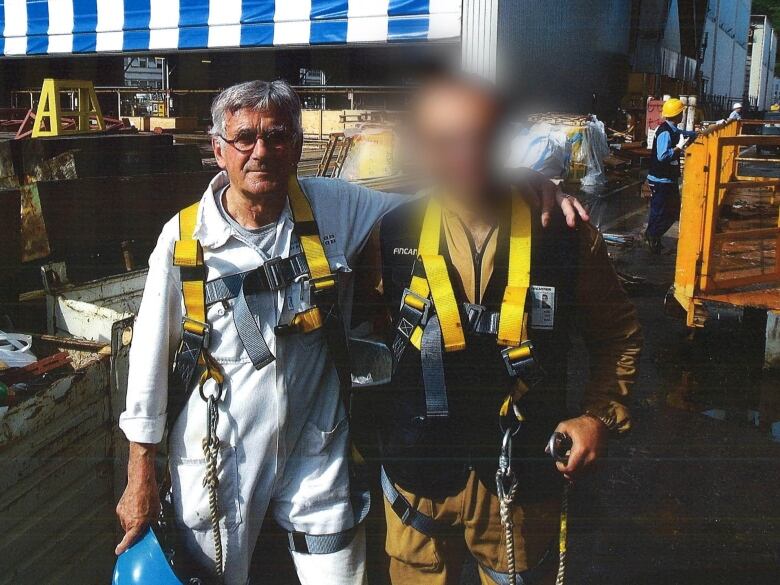
Lebrun, who was in Italy for more than a year, said he saw defects in the building process. "There were a lot of problems with welding, problems with the alignment of building elements, sanding and painting work, and so on," he said in an interview with Radio-Canada.
He said he also witnessed the installation of equipment, such as ventilation ducts, that was completely rusted.
"In Italy, it rains a lot," he said. "The ship wasn't protected from the weather. There was a lot of water coming into the boat. Very often, there were insulation, wall panels in the passenger halls, that had to be taken out because everything was dirty. It was another big problem."
He also said the main deck of the F.A. Gauthier was not completely welded when it was launched, which two naval architects confirmed is a risk to the integrity of the ship.
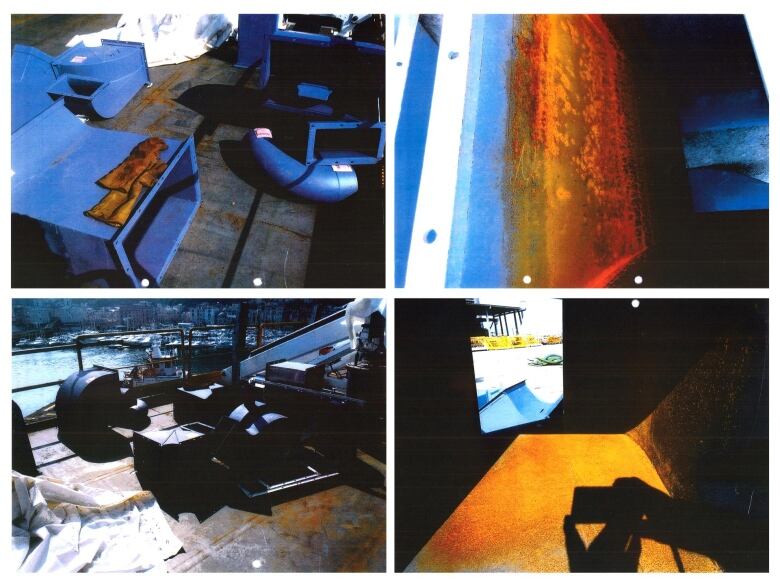
Whistleblowers
In February, Lebrun was so upset by news reports of problems affecting the ferry route that he decided to write to Bonnardel, the transport minister, whose portfolio includes the STQ.
In his correspondence, Lebrun told Bonnardel he could provide information about the conditions under which the ship was designed and built. He told the minister there was a general lack of quality on the worksite during the shipbuilding process.
Soon after he sent the letter, Lebrun said he received a short phone call from the minister's office, but he said nothing happened as a result. Eventually, he agreed to tell his story to Enqute. (On Thursday, Bonnardel said the call lasted 20 minutes.)
Lebrun was also moved to tell his story because of threats he says he has received from STQ's leadership.
"They told me that if I shared information in the media, I was opening myself up to civil prosecution," Lebrun said.
The STQ declined to comment on his case, calling it a human resources issue.
Martin Saint-Pierre, who captained the Camille Marcoux and F.A. Gauthier ferries for more than 15 years, also went on the record about the construction of the ship. He has since retired.
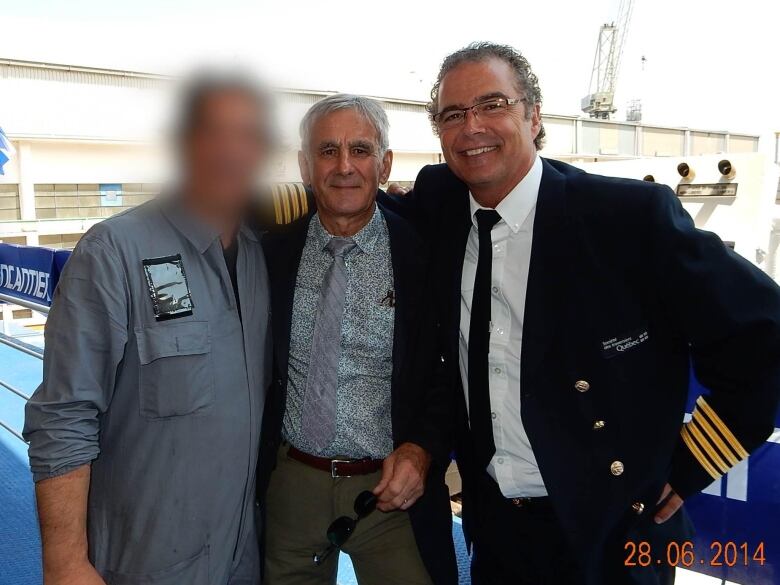
Saint-Pierre spent a year at the Fincantieri site in Italy while the F.A. Gauthier was being built. In his view, the ferry company didn't send enough people to properly oversee construction.
"The last few months, it was crazy," he said. "They needed 20 people to see everything that was being done. We missed a lot of things because we didn't have a big enough team."
Over the duration of the project, the STQ rotated in three inspectors, each with a different specialty (structural, mechanical and electrical).
"For me, the most important thing is the lack of quality control that meant some steps were a little quick," Saint-Pierre said.
He said Fincantieri's only quality control employee was hard to find. "We never saw him on the site," Saint-Pierre said. "In a year, I must have seen him two or three times."
Fincantieri declined to answer Radio-Canada's questions.
Lebrun said he believes quality control staff, especially people from the STQ, were underrepresented.
"Normally, in Italy, to oversee the construction of a ship like this, they would have about a dozen inspectors," he said.
Saint-Pierre believes that the STQ blindly trusted Fincantieri.
"You invest $148 million in an asset," he said. "At the very least you send your own people to monitor your interests."
The F.A. Gauthier's total cost reaches $210 million once various other expenses are added in, including the costs of the ferry designs, bringing the ship into service and upgrading ferry wharves in Quebec to accommodate the vessel.
That doesn't take into account the aforementioned $60 million in unplanned costs.
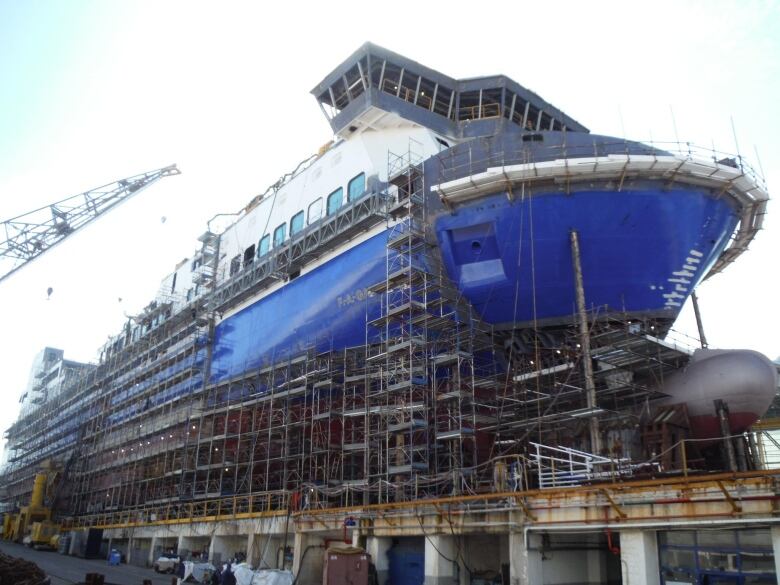
In an interview, Benot Cormier, a director at the STQ who oversaw the project, said that the Crown corporation had relied on Fincantieri's internal quality control and the classification society that certified the vessel. A classification society is an independent company that inspects the vessel and certifies that it meets certain standards.
"That's the theory. The reality is different," said Cmdr. Bertrand Apperry, president of the Association franaise des experts maritimes, a consulting firm based in Le Havre, France, who has overseen the construction of several ships during his career.
Apperry said the STQ's oversight method did not guarantee quality, since shipbuilding site managers would be inclined to save time during construction and could compromise on the quality of the equipment.
"If you want a well-built ship..., track the construction every day, with your best staff," he said. "There's a cost to this, but it's worth it."
Reprisals
At the shipbuilding site, Lebrun and Saint-Pierre worked under project head Luc Martin, the STQ manager onsite during the construction in Italy.
Saint-Pierre and Lebrun say some of the shipbuilding problems they identified were not corrected, and they were surprised by Martin's inaction.
Lebrun offered a theory: in some cases, Martin didn't send their reports on to Fincantieri, and in some cases when the reports were sent to the shipbuilder, nothing was done, he said.
In the latter situation, "the project head should have intervened and put pressure on the company," Lebrun said. "And, often, this was not the case."
In the fall of 2014, Lebrun began copying an STQ director in Quebec City on construction defect reports he was sending to Martin.
"I absolutely wanted to protect myself and that's when the work relationships got much more tense," he said.
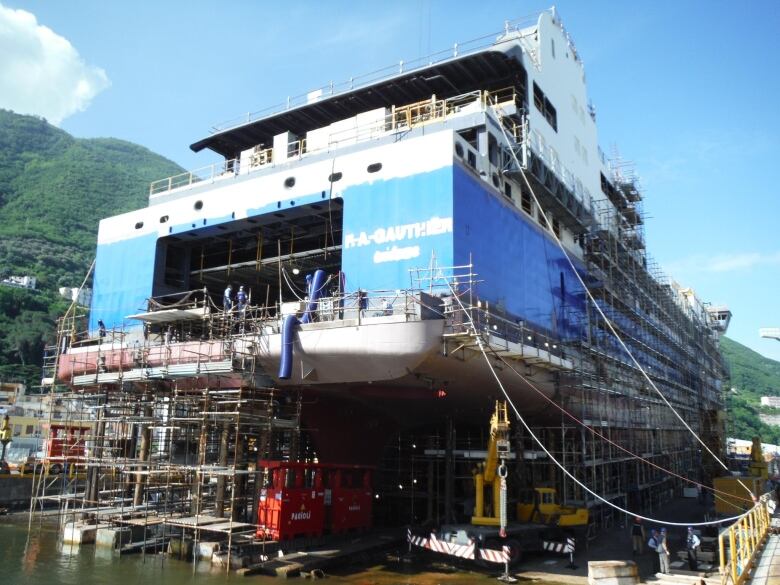
In October, STQ director Benot Cormier ordered Lebrun back to Quebec to "rest."
Back home, Lebrun went to his doctor, who administered a battery of tests. The test showed him to be in excellent physical condition. At that point, the STQ asked for a second opinion.
"I went to see the [STQ] doctor, who examined me, read my doctor's report and laughed, saying 'What is this nonsense?'" Lebrun recalled.
Once their attempt to have Lebrun declared unfit for work failed, the STQ sent him back to Italy.
A week later, he was fired, accused of insubordination towards Martin, the project head.
The STQ denies that it retaliated against its employees who denounced quality defects at the Fincantieri shipyard.
Enqute reached out to Martin for comment. He responded with a legal notice that says the allegations against him are false and that his obligation of confidentiality prevents him from saying more.
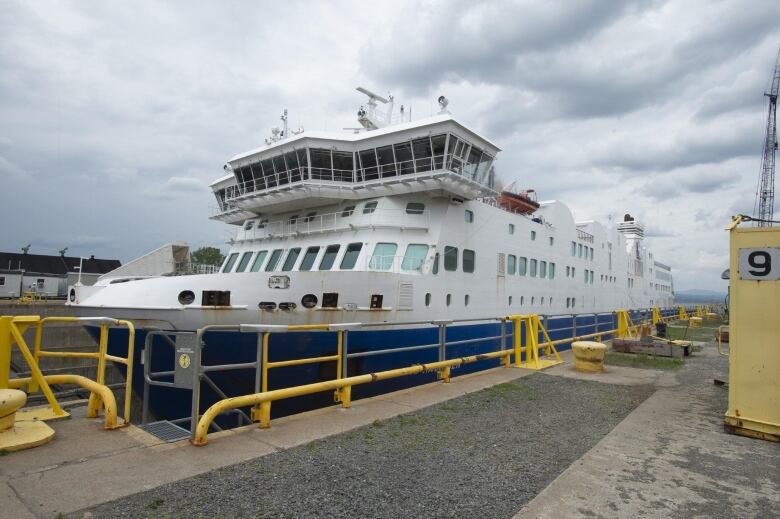
New STQ head 'not amazed' by ship's quality
Stphane Lafault, who has headed the STQ for six months, said he "would not say that we are amazed by the quality" of the F.A. Gauthier.
"There are valves, pumps, a problem that has developed with the ship's front door ... So, when I consider the level of durability that might be expected from some of these components, it hasn't reached them," he said.
Lafault also reacted strongly to Saint-Pierre and Lebrun's allegations.
"This is not my vision or idea for a Crown corporation or any professional organization," he said. "If these people want to come and talk about what they've experienced, I'm ready to listen to them."
Bonnardel, the transport minister, said it was "unacceptable" to hear that Lebrun was told "you cannot talk or you will lose your job."
He said the goal was to get the F.A. Gauthier back in service before Christmas.
But even that seems uncertain. After months of inspections at the repair facility, specialists from the company that makes the propellers haven't been able to clearly identify why they broke down.
Translated by John MacFarlane and edited by Kamila Hinkson












_(720p).jpg)


 OFFICIAL HD MUSIC VIDEO.jpg)
.jpg)



























































































